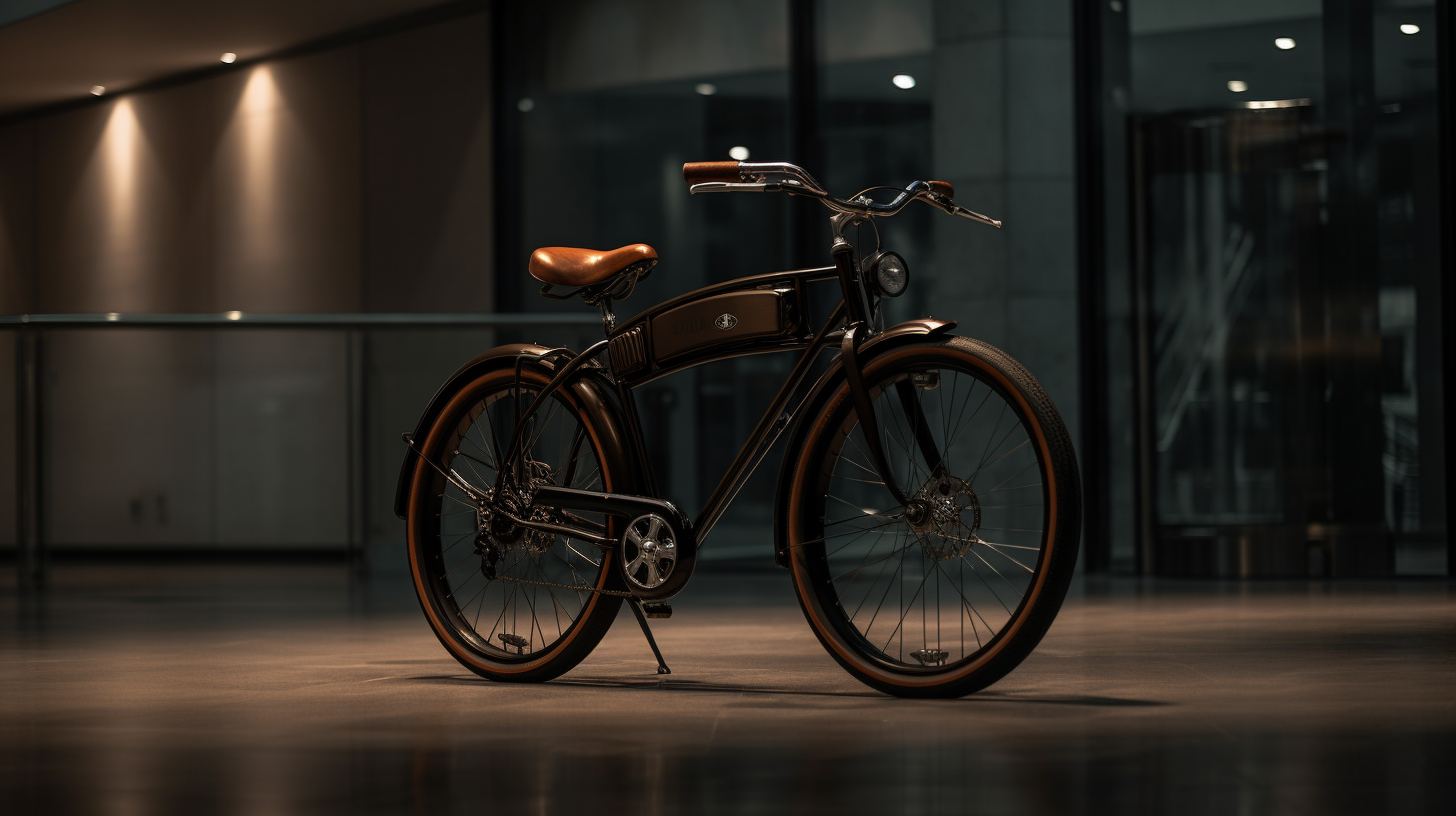The rise of electricity bikes
In recent years, electricity bikes have gained significant popularity across the globe, transforming the way we travel and commute. As the demand for eco-friendly and efficient transportation solutions increases, more and more people are turning to electricity bikes as a viable alternative to traditional bicycles and cars. Combining the advantages of both manual and electric-powered transportation, these innovative machines offer a unique blend of convenience and sustainability.
In this comprehensive guide, we will delve into the world of electricity bikes, exploring their various pros and cons, and ultimately answer the question: Are they worth it? By analyzing the environmental, health, and financial benefits, as well as addressing the potential drawbacks, this article aims to provide an objective perspective for those considering investing in an electricity bike. Whether you are a seasoned cyclist or a first-time rider, our goal is to help you make an informed decision based on a thorough understanding of the advantages and disadvantages of electricity bikes.
Understanding Electricity Bikes
What are electricity bikes?
Electricity bikes, also known as e-bikes or electric bicycles, are a type of hybrid transportation that combines the traditional features of a bicycle with an electric motor. This motor assists the rider in propelling the bike forward, making it easier to cover longer distances and tackle challenging terrains. Electricity bikes come in various styles and configurations, including road, mountain, and folding e-bikes, catering to a wide range of users and purposes.
How do electricity bikes work?
Electricity bikes operate using a battery-powered motor that assists the rider when pedaling. The motor’s assistance level can be adjusted, offering varying degrees of support depending on the rider’s needs and preferences. Most electricity bikes feature a pedal-assist system (PAS), which detects the rider’s pedaling effort and provides assistance accordingly. Some models also include a throttle mode, allowing the bike to be propelled without pedaling.
The electric motor is powered by a rechargeable battery, usually lithium-ion, which can be removed for easy charging. The battery’s capacity directly affects the bike’s range, with larger-capacity batteries offering longer rides between charges. Electricity bikes are designed to be user-friendly, often featuring an onboard display that provides information on battery life, speed, distance traveled, and assistance levels.
The Pros of Electricity Bikes
Environmental benefits
Reduced emissions
One of the most significant advantages of electricity bikes is their positive impact on the environment. As e-bikes use electric power instead of fossil fuels, they produce zero tailpipe emissions. By choosing an electricity bike as your primary mode of transportation, you help reduce greenhouse gas emissions, contributing to the global effort to combat climate change.
Decreased noise pollution
Electricity bikes are considerably quieter than cars and motorcycles, contributing to a reduction in noise pollution, especially in urban areas. This not only makes for a more pleasant riding experience but also benefits the community by reducing overall noise levels in residential and public spaces.
Health and fitness advantages
Increased physical activity
While electricity bikes do offer motor assistance, riders still need to pedal, engaging in physical activity. This makes e-bikes an excellent option for those looking to incorporate more exercise into their daily routine. The adjustable assistance levels allow riders to tailor their workout intensity, making it suitable for individuals with varying fitness levels.
Assisted cycling for all ages and fitness levels
Electricity bikes enable people of all ages and fitness levels to enjoy cycling. The motor assistance can make cycling more accessible for older adults, individuals with physical limitations, or those recovering from injuries. By making cycling less daunting, electricity bikes encourage more people to adopt a healthier and more active lifestyle.
Cost-effectiveness
Lower fuel and maintenance costs
In comparison to cars and other gas-powered vehicles, electricity bikes are significantly cheaper to run and maintain. Charging an e-bike battery costs only a fraction of the expense of refueling a car, resulting in significant savings over time. Additionally, electricity bikes have fewer mechanical parts than cars, leading to lower maintenance costs.
Government incentives and rebates
Many governments around the world offer incentives and rebates for purchasing electric vehicles, including electricity bikes. These incentives can help offset the initial cost of purchasing an e-bike, making it a more attractive investment for potential buyers.
Improved urban mobility
Reduced traffic congestion
By choosing an electricity bike for your daily commute, you contribute to reducing traffic congestion in cities. E-bikes are not only more compact than cars but they can also be used in dedicated bike lanes, freeing up space on the roads and making commuting more efficient for everyone.
Easier parking
Finding a parking spot in crowded urban areas can be a frustrating task for car owners. Electricity bikes, on the other hand, require less space and can be parked in designated bike racks, simplifying the parking process and saving time.
The Cons of Electricity Bikes
Initial investment
Higher upfront costs
One of the primary drawbacks of electricity bikes is their higher initial cost compared to traditional bicycles. While prices have been decreasing as technology becomes more widespread, e-bikes still tend to be more expensive due to their additional components, such as the motor, battery, and electronic controls.
Comparing to traditional bikes
When considering the initial cost, it’s essential to compare electricity bikes not only to cars but also to conventional bicycles. While e-bikes are generally more expensive than traditional bikes, the added benefits they provide, such as motor assistance and increased range, should be factored into the decision-making process.
Battery-related concerns
Limited range and charging infrastructure
Although the range of electricity bikes has improved over the years, it is still limited compared to gas-powered vehicles. The distance an e-bike can travel on a single charge depends on factors such as battery capacity, motor efficiency, rider weight, and terrain. While most e-bikes offer a sufficient range for daily commuting, longer trips may require careful planning and access to charging infrastructure, which is not as widely available as gas stations.
Battery lifespan and disposal
Battery life is another concern for potential e-bike buyers. Over time, the capacity of lithium-ion batteries declines, resulting in a reduced range. Although battery technology continues to improve, eventually, the battery will need to be replaced, adding to the overall cost of owning an electricity bike. Additionally, disposing of used batteries can be an environmental concern, as improper disposal can contribute to pollution and resource depletion.
Safety issues
Potential for accidents
While electricity bikes can help reduce traffic congestion and offer an eco-friendly transportation alternative, they also come with some safety concerns. The higher speeds of e-bikes compared to traditional bicycles can lead to accidents if riders are not cautious and aware of their surroundings. Ensuring that e-bike riders are well-versed in cycling safety and follow traffic rules is crucial to minimize potential risks.
Legal restrictions and regulations
Laws and regulations surrounding electricity bikes vary between countries and even within states or provinces. In some areas, e-bikes may be subject to restrictions on speed, motor power, or where they can be ridden. It is essential for potential e-bike buyers to familiarize themselves with local regulations to ensure they can legally and safely use their electricity bikes.
Performance limitations
Reduced speed
While electricity bikes are generally faster than traditional bicycles, they are not as fast as cars or motorcycles. This can be a drawback for those who need to travel long distances quickly or who are used to the speed of motorized vehicles.
Climbing steep inclines
Although the motor assistance on e-bikes can make climbing hills easier, they may struggle with particularly steep inclines, especially when carrying heavy loads. Riders should be aware of their e-bike’s limitations and consider their local terrain when choosing an electricity bike.
Tips for Choosing the Right Electricity Bike
Determine your needs
Commuting vs. leisure
Before purchasing an electricity bike, it’s essential to identify your primary purpose for using the e-bike. Are you planning to use it for daily commuting or leisure rides on the weekends? Knowing your intended use will help you select the most suitable e-bike model and features. For example, a folding e-bike might be perfect for those with limited storage space or who need to combine cycling with public transportation, while a mountain e-bike would be ideal for off-road adventures.
Terrain and distance
Another crucial factor to consider is the terrain you’ll be riding on and the distance you plan to cover. If you live in a hilly area or plan to tackle steep inclines regularly, you’ll need an electricity bike with a powerful motor and sufficient battery capacity. Conversely, if you expect to ride mostly on flat surfaces or cover shorter distances, a more modest motor and battery may suffice.
Compare models and features
Motor power and battery capacity
Different electricity bikes come with varying motor powers and battery capacities. A more powerful motor will provide greater assistance, making it easier to ride uphill or against headwinds, while a larger battery capacity will allow for a longer range between charges. Keep in mind that more powerful motors and larger batteries can also add weight and cost to the e-bike. It’s essential to strike a balance between power, range, and cost when selecting the right electricity bike for your needs.
Frame material and design
The frame material and design can significantly impact the weight, durability, and overall performance of an electricity bike. Common frame materials include aluminum, steel, and carbon fiber, each with its own advantages and disadvantages in terms of weight, strength, and cost. When selecting an e-bike, consider your personal preferences, riding style, and budget to find the best option.
Test ride and adjust
Comfort and ergonomics
Before purchasing an electricity bike, it’s highly recommended to take it for a test ride. This will help you determine if the bike is comfortable and suits your riding style. Pay attention to factors such as seat comfort, handlebar height and reach, and overall ergonomics. The right e-bike should feel comfortable and easy to control.
Customization options
Many electricity bikes come with customization options that allow you to adjust and fine-tune various components to better suit your needs and preferences. Some common customization options include adjustable seat height, handlebar height, and motor assistance levels. If you have specific requirements or preferences, ensure that the e-bike you choose offers the necessary adjustments and flexibility.
Weighing the pros and cons
As we’ve explored throughout this article, there are numerous pros and cons to consider when deciding whether electricity bikes are worth the investment. On the one hand, e-bikes offer significant environmental benefits, health and fitness advantages, cost-effectiveness, and improved urban mobility. On the other hand, they also come with higher upfront costs, battery-related concerns, safety issues, and performance limitations.
Are electricity bikes worth it?
Ultimately, the answer to whether electricity bikes are worth it depends on your individual needs, preferences, and circumstances. For those looking for an eco-friendly, cost-effective, and convenient transportation alternative that promotes physical activity, an e-bike can be an excellent choice. However, it’s essential to weigh the potential drawbacks, such as initial costs and battery lifespan, against the benefits.
By carefully considering the factors outlined in this article, including your intended use, local terrain, and desired features, you can make an informed decision about whether an electricity bike is a right choice for you. As e-bike technology continues to evolve and improve, it’s likely that their advantages will only increase, making them an increasingly attractive option for a wide range of users.




